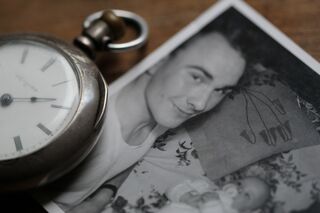Identity
The Real Bourne Identity: The Psychology of Ansel Bourne
The real life Jason Bourne didn't have amnesia—he had dissociative fugue.
Posted October 6, 2020 Reviewed by Devon Frye
By all accounts, A.J. Brown was an ordinary man. He lived in Norristown, Pennsylvania in the late 1800s, and made a living making stationary. He held a modest apartment and had a good relationship with his neighbors.
On March 14th 1887, he woke up and had no idea who he was.
The first person to come into contact with him that day was his landlord, who was greeted by Brown’s confused question at his door, “Who am I?”
Local physicians were brought in to examine him. The initial diagnosis was amnesia: Brown had somehow lost his memory, and couldn’t remember who he was or how he got there.
But Brown hadn’t lost his memory. Brown wasn’t Brown, at all.
What the physicians learned is that the person they were treating was actually named “Ansel Bourne.” He had only been living in Norristown for only two months. Before that, the 61-year-old had lived his whole life in Coventry, Rhode Island, working as a carpenter and serving as a pastor.
Bourne had no recollection of the previous two months and had no idea who A.J. Brown was. According to reports, he had never even heard the name before. The name of the person he had been living as for two months was that of a perfect stranger.
The Psychology of Identity
How can we make sense of this? Over 150 years later, Ansel Bourne became the inspiration for the Jason Bourne books and movies. But unlike Jason, who merely lost his memory, Ansel completely lost his original identity, and then took on a new one.

Ansel Bourne was one of the first instances of “dissociative fugue,” an extremely rare condition that has only been documented in a handful of cases since.
It presents as a shorter-term version of “dissociative personality disorder,” where the "self" splits off into several distinct individuals with no recognition or understanding of one another. These cases too, have been popularized in mass media with movies like "Sybil" (1976), "Me, Myself, and Irene" (2000), and "Identity" (2003). Both conditions are so rare that they remain poorly understood.
It’s unclear why someone is prone towards dissociation in the first place, and what triggers a dissociative fugue state. However, it would be a mistake to cast these experiences as completely alien. If we probe deeper, we can see a hint of Ansel Bourne in all of us.
The Psychology of the Malleable Identity
We can notice this everyday dissociation by noting how we feel across different environments. From one context to the next, we often feel like very different people, each with its own slightly different personality, preferences, and behavior.
For example, we may act very differently when we're around our family members than we do around friends, and even from our colleagues. We feel very different when we’re away at school than we are when we’re back home with family. Our sense of identity in the moment is contingent on where we are and who we’re with.
This is further compounded by the fact that the brain’s learning systems are very much context-dependent. That is, if you learn something in one context, you’re much more likely to remember it in that same context. So when we re-enter a familiar context—such as coming home to our childhood home for Thanksgiving—all of the memories associated with that place suddenly come back.

Memory is crucial here. We wake up every morning as a slightly different entity, and yet memory holds us together. It’s the glue that maintains us as a single, consistent person. As James McGaugh, memory expert and professor of neurobiology at UC Irvine describes, “Memory is our most important ability. Without memory, there would be no human beings.”
The intertwining of memory, context, and “identity” complicates the idea of a coherent self. If we can feel like a different person from one context to the next, and memory, the glue which holds the self together, is also context-dependent, then the “self” may be much more nebulous than we think.
The picture is further muddied when we take on a neuroscientific perspective. If the self exists anywhere, it should be found in our heads, but there is scant evidence for a single, unified "self" in the brain. Neuroscience suggests that, instead of being located inside the brain, the self is a representation created by the brain.
As psychiatrist and writer Ralph Lewis, M.D., explains, “The self is not a unified ‘thing.’ Rather, the brain is actually a confederation of independent modules working together. The vastly complex unconscious neuronal determinants that give rise to our choices and actions are unknowable to us. The brain conveniently constructs a simplified narrative of a unitary ‘self,’ the independent agent of all our thoughts and behaviors.”
In other words, the “self” is an idea; a mental construct that the brain creates to help us navigate the world. And just like all constructs, the self is highly malleable. And for reasons not completely understood, simply more malleable in cases of dissociative fugue.
Final Words on The Psychology of Identity
Though Ansel Bourne was one of the first documented cases of dissociative fugue, he’s far from the only one. Jeff Ingram of Olympia, Washington “came to” in Denver, Colorado with no idea who he was or how he arrived there. Hannah Upp had several documented cases of dissociative fugue and has been missing in The Virgin Islands since 2018. Jody Roberts of Washington state disappeared in 1985, and was found over a decade later living a peaceful life in Alaska under the name of "Jane Dee Williams."

From one perspective, we can look at cases like Bourne’s, and others like him, in complete amazement. You’ve lost your keys before. You’ve lost memories before. But losing your self? It’s very literally the one constant in our lives.
But when we look further, we can see that such instances, while anomalous, aren’t categorically different from our own experiences. The self may feel as real it possibly gets. But ultimately, it’s a construction of the brain—a representation, pieced together over time and place, which is much more fragile than we may realize.
In this light, A.J. Brown doesn’t seem like such a stranger after all.
This article also appears on the consumer behavior blog, MJISME
References
Aviv, R. (Dec, 2018). "How a Young Woman Lost Her Identity". The New Yorker.
Dell PF. (2006) A new model of dissociative identity disorder. Psychiatry Clin North Am 2006; 29:1–26.
Hood, B. (2012) The Self Illusion: How the Social Brain Creates Identity (Oxford; New York: Oxford University Press
Lewis, R. (Aug, 2020), How Do We Know What Is Real? PsychologyToday
Juneau Empire (July, 1997) Experts say that Roberts may indeed have amnesia | Juneau Empire.
NPR (Dec. 2012) "For Man With Amnesia, Love Repeats Itself". NPR. 2012-12-13.
Rolph, D. (2014) The Ansel Bourne Identity: A 19th Century Mystery, Pennsylvania Historical Society




